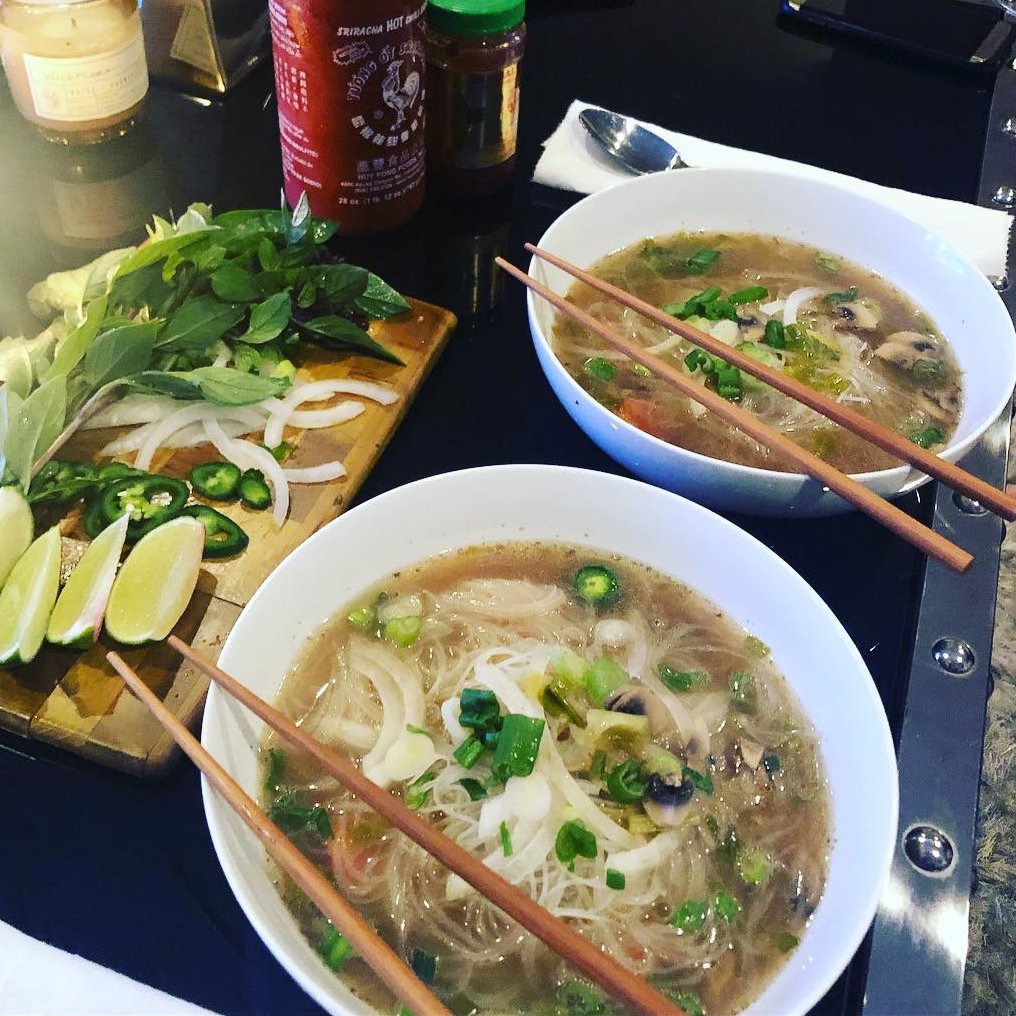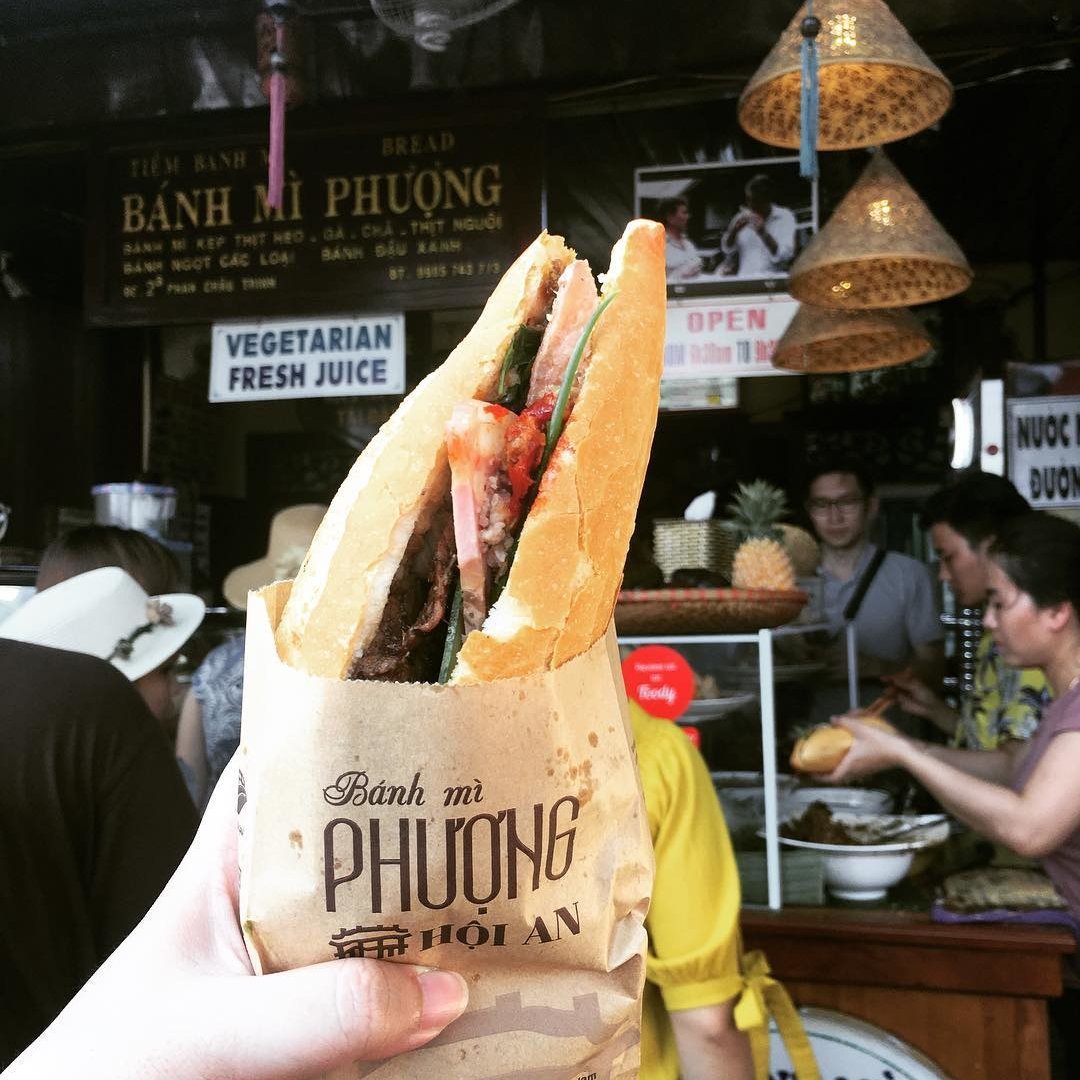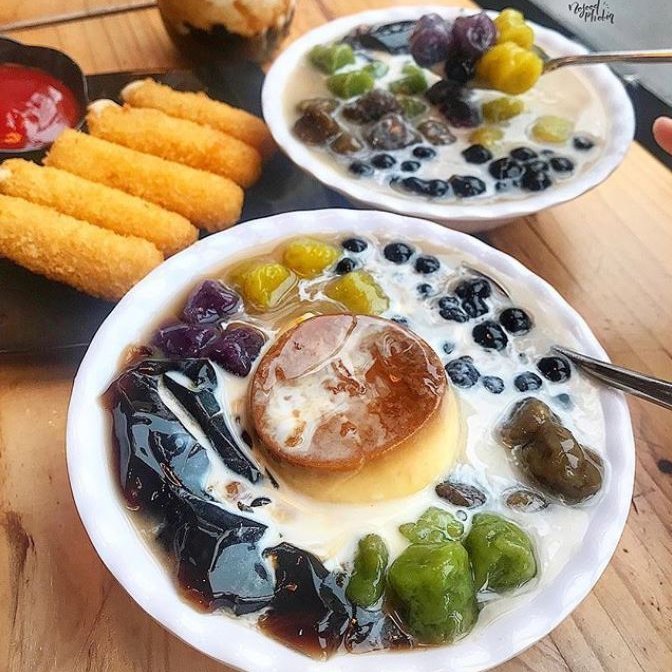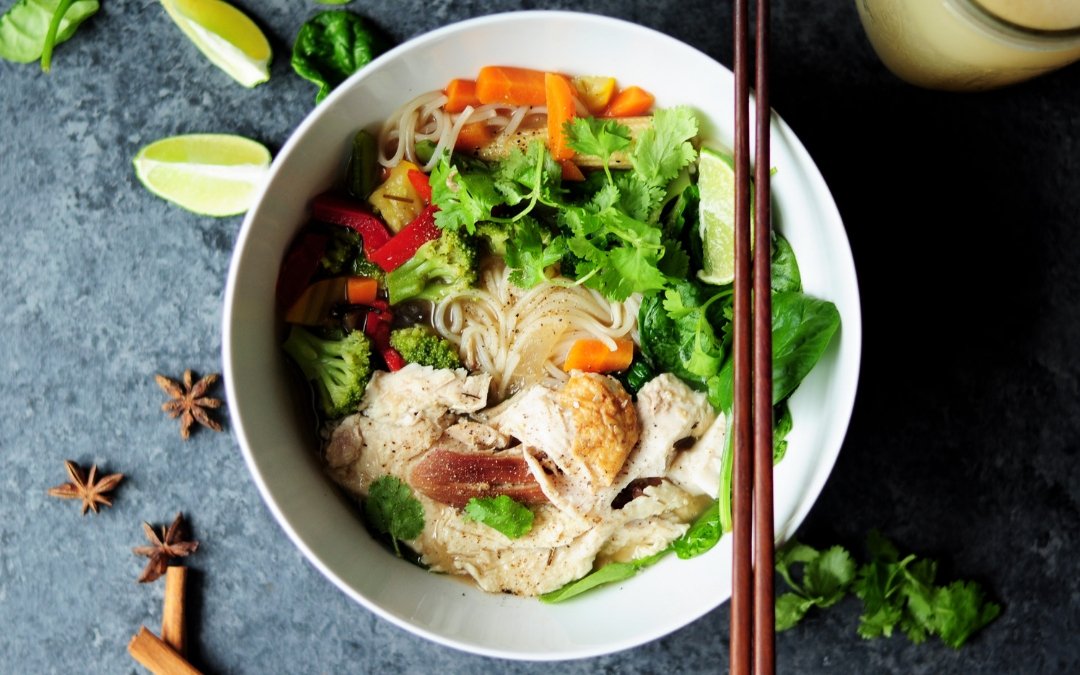If the only Vietnamese food you’ve tried is phở, you’re really missing out on a plethora of delicious dishes defined by daring and distinct use of herbs, spices, and sauces. And eating in Vietnam is not a boring sit-down affair in a sterile restaurant. The nation’s delicacies are better sampled right on the street while you perch precariously on plastic stools as motorcycles zoom by you, only inches away.
We all know street food is the best sort of cuisine, anyway—and Vietnamese eating culture epitomises this down-to-earth authenticity, one that you can taste in its food.
Phở

Photo by claire_tofu via Instagram.
We would not be phởgiven (pardon the pun) if we curated this list without listing phở.
A good bowl of phở has a complex broth that is at once beefy, herbal, and sweet, with silky rice noodles that you can slurp right up without having to chew.
Combine that with tender morsels of rare beef and the fresh hit of basil and mint, and you’ve got a hearty, comforting bowl of noodles that you’d want to eat for every meal.
While the basis of phở–the broth, the beef, and the noodles—are identical through Vietnam, the North and the South have their own take on it. Phở Hà Nội, or Hanoi-style phở, keeps the dish classic with a heavier and oilier broth, such that the only accompaniments it needs are chopped chili and lime.
 The South prefers a lighter broth that is perked up by hits of fresh basil, coriander, and mint, and the crunch of bean sprouts. You can even accentuated the broth further by adding pickled garlic and a multitude of sauces that sit at every table of the phở shops in Saigon.
The South prefers a lighter broth that is perked up by hits of fresh basil, coriander, and mint, and the crunch of bean sprouts. You can even accentuated the broth further by adding pickled garlic and a multitude of sauces that sit at every table of the phở shops in Saigon.
Bánh Mì

Photo by cyan.123 via Instagram.
Think of bánh mì as a sort of French-inflected Vietnamese sandwich.
Wedged between freshly baked baguettes is an assortment of fillings that vary according to region—but our favourites are the bánh mì that come stuffed with paté, picked vegetables, heaps of fresh coriander, and of course a generous serving of cold cuts.
The result is an explosion of tastes and textures that somehow perfectly complement each other.
Apart from the joy you feel from consuming the pinnacle of a sandwich, eating bánh mì also imparts a strange, ambivalent sensation to the politically conscious. How can such a delicious meal arise from the tumultuous affair of colonialism?
Though munching on bánh mì bears no fruitful answers, it is a reminder that food is as much a country’s cultural heritage as its architecture.
Gà Nướng Sả

On first sight, gà nướng sả is essentially grilled chicken on white rice or vermicelli noodles, a staple fare of many cuisines. What makes it stand out, then?
As is the case in many Vietnamese dishes, its distinguishing feature lies in the use of sauces and herbs. In particular, lemongrass is a flavour signature to Vietnamese cuisine—East Indian lemongrass is native to Vietnam (and Mainland Southeast Asia) and has been used by people in the region for centuries—and the herb takes the centre stage here.
The chicken is first marinated in a blend of honey, fish sauce, lemongrass (of course), and other secret ingredients, depending on the chef. It is then grilled over a roaring flame that gives it a crackling skin while keeping the meat inside moist and tender.
If you like bbq, you’ll love this piquant and aromatic take.
Bánh Xèo

Despite its lace-like, eggy appearance, bánh xèo is actually more a pancake or crepe than an omelette, as its name, “sizzling pancake”, suggests.
The yellow colour derives from the addition of turmeric to the rice batter, which not only makes it gloriously golden, but also tasty and healthy (turmeric is a powerful antioxidant).
Bánh xèo typically contains shrimp, pork, bean sprouts, and greens, and is eaten dunked into a sauce that is unique to every chef.
Like phở, each region has put its own twist on bánh xèo—but unlike phở, these variations can change the flavour profile of the dish immensely!
For instance, you might find bánh xèo with fruits like banana and starfruit in central Vietnam, which sort of turns it into a sweet crepe, compared to the standard savoury fillings that the Southern chefs favour.
Stay connected in Vietnam from as low as *$4.20/daily!
Chè

Photo by nhyn932281 via Instagram.
Once you’ve had your fill of hearty savoury fare, it’s time to unwind with a traditional Vietnamese dessert, chè.
Chè is actually an umbrella term for any sweet Vietnamese drink or pudding, so there is an endless variety to pick from. The most common ingredients include beans, fruits, tapioca, jelly; the ingredients are then almost always topped with sweet coconut cream.

It’s the perfect dessert for you to cool off during a scorching Vietnamese day, and, with the array of ingredients, you are sure to find one that appeals to your palate.
It’s also super convenient to get—just pop into any grocery store and you’ll find rows of chè in plastic cups lining the shelves—befitting of its status as the national dessert of Vietnam.
Ready to explore all that Vietnam has to offer? Skip the long immigration line and get VIP Fast Track Service at the Airport!
[su_button url=”https://attractions.changirecommends.com/ticket/product/Fast-Track-Service-in-Airport-(Hanoi,-HCM,-Danang)/Vietnam/3305?productName=Fast+Track+Service+in+Airport+%28Hanoi%2C+HCM%2C+Danang%29&productId=3305&utm_source=discoverist&utm_medium=article&utm_campaign=vietnamfood&utm_id=fasttrackvietnam” target=”blank” style=”soft” background=”#8b3fc0″ size=”4″ radius=”round” icon=”icon: hand-o-right”]Get a head start on your Vietnamese holiday![/su_button]
The article was originally published on 29 April 2019. Last updated by Discoverist Team as of 28 March 2023.




